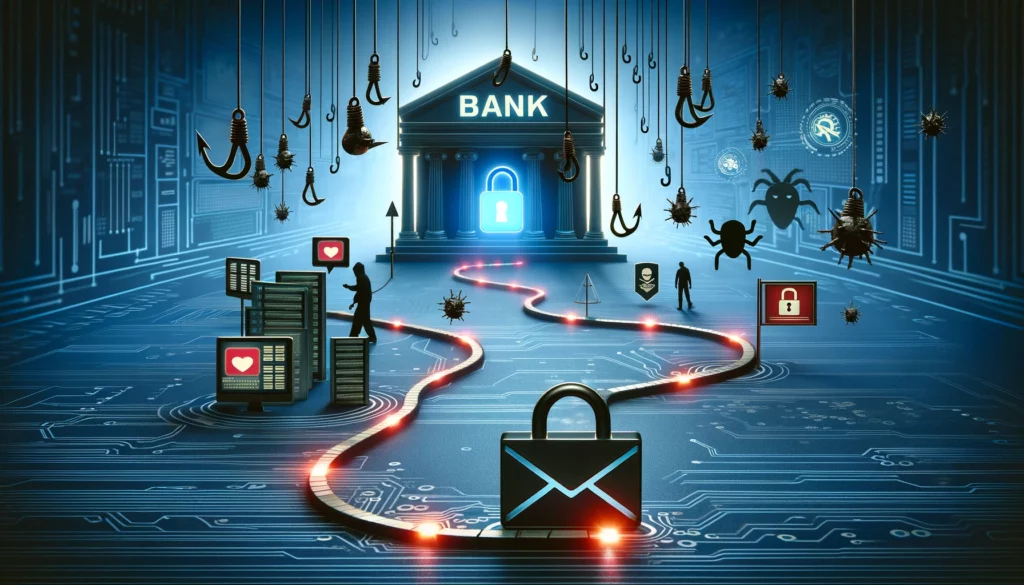Data breaches have sadly become a pervasive threat, affecting individuals, businesses, and financial institutions with alarming frequency. These breaches represent more than just a breach of security; they pose significant risks to the very fabric of trust and confidence that underpins the banking sector. For financial institutions, the stakes are particularly high, as the fallout from a data breach can extend far beyond financial losses to encompass irreparable damage to reputation and customer relationships.
Consider the scenario: a cybercriminal gains unauthorized access to a bank’s database, compromising sensitive financial information such as account numbers, credit card details, and transaction histories. The ramifications of such a breach are profound. Not only does it expose individuals to the risk of identity theft and financial fraud, but it also erodes the trust and confidence that customers place in their banks to safeguard their personal and financial information.
Indeed, the impact of a data breach on banking security cannot be overstated. Beyond the immediate financial losses incurred through fraudulent transactions and regulatory fines, banks face long-term reputational damage that can tarnish their brand image and deter customers from entrusting them with their financial assets. The erosion of trust resulting from a data breach can have far-reaching consequences, leading to customer churn, diminished market share, and increased regulatory scrutiny.
In response to these growing threats, financial institutions must adopt a proactive approach to cybersecurity, bolstering their defenses and resilience against potential breaches. This entails implementing robust security controls, such as encryption, multi-factor authentication, and intrusion detection systems, to safeguard sensitive data and prevent unauthorized access. Moreover, banks must invest in employee training and awareness programs to educate staff about cybersecurity best practices and empower them to recognize and respond to potential threats effectively.
Understanding Data Breaches
A data breach occurs when unauthorized individuals or entities gain access to sensitive or confidential information without authorization. This can include personally identifiable information (PII) such as names, addresses, social security numbers, and financial data such as credit card numbers, bank account details, and transaction histories. Data breaches can occur through various means, including cyberattacks such as hacking, malware infections, phishing scams, insider threats, and physical theft of devices or storage media.
Impact on Banking Security
For banks and financial institutions, the consequences of a data breach can be far-reaching and multifaceted. Here are some of the key ways in which data breaches can impact banking security:
- Financial Losses: Data breaches can result in significant financial losses for banks, including costs associated with investigating the breach, remediation efforts, regulatory fines, legal fees, and potential compensation to affected customers. Moreover, the reputational damage stemming from a data breach can lead to loss of customer trust and loyalty, further impacting revenue and profitability.
- Identity Theft and Fraud: One of the most immediate risks posed by data breaches is the potential for identity theft and financial fraud. Cybercriminals may use stolen credentials or personal information obtained from a data breach to commit fraudulent transactions, open unauthorized accounts, or impersonate individuals for illicit purposes. This can result in financial losses for both customers and banks, as well as damage to reputations and credit scores.
- Regulatory Compliance: Banks are subject to strict regulatory requirements governing the protection of customer data and the notification of data breaches. In the event of a breach, banks may face scrutiny from regulatory authorities and be required to comply with reporting and disclosure obligations, which can be time-consuming and resource-intensive. Failure to comply with regulatory requirements can result in fines, penalties, and legal consequences.
- Operational Disruption: Data breaches can disrupt banking operations, causing downtime, system outages, and service interruptions. This can impact customer service, transaction processing, and overall business continuity. In some cases, banks may need to temporarily suspend certain services or restrict access to affected systems to contain the breach and prevent further damage.
Mitigating Risks and Enhancing Security
To mitigate the risks associated with data breaches and enhance banking security, financial institutions can implement a range of proactive measures and best practices:
- Implement Strong Security Controls: Banks should implement robust security controls and protocols to protect against unauthorized access, including encryption, multi-factor authentication, access controls, and intrusion detection systems. Regular security assessments and audits can help identify vulnerabilities and weaknesses in systems and processes.
- Educate Employees and Customers: Employee training and awareness programs are essential for educating staff about cybersecurity best practices, recognizing phishing scams, and maintaining vigilance against potential threats. Similarly, banks should educate customers about online security risks, safe banking practices, and measures they can take to protect their personal information.
- Monitor and Detect Anomalies: Banks should deploy advanced monitoring and detection systems to identify suspicious activities, unusual behavior patterns, and indicators of compromise. Real-time monitoring of network traffic, transaction logs, and user activities can help detect and respond to potential security incidents promptly.
- Develop Incident Response Plans: Banks should develop comprehensive incident response plans outlining procedures for responding to data breaches, including containment, investigation, notification, and recovery efforts. Regularly testing and updating incident response plans can ensure they remain effective and responsive to evolving threats.
- Collaborate and Share Information: Collaboration and information sharing among banks, industry partners, and cybersecurity organizations are critical for enhancing collective resilience and response capabilities. Sharing threat intelligence, best practices, and lessons learned from data breaches can help banks stay ahead of emerging threats and adapt their security strategies accordingly.
Conclusion
Data breaches represent a significant threat to banking security, with far-reaching implications for financial institutions, customers, and the broader economy. By understanding the impact of data breaches on banking security and implementing proactive measures to mitigate risks, banks can enhance their resilience to cyber threats and protect against potential breaches. By investing in robust security controls, employee training, incident response capabilities, and collaboration efforts, banks can strengthen their defenses and safeguard the confidentiality, integrity, and availability of customer data. Ultimately, proactive cybersecurity measures are essential for maintaining trust, confidence, and stability in the banking sector in an increasingly digital and interconnected world.

Penetra Cybersecurity is at the forefront of defending the digital frontier, providing cutting-edge solutions to protect businesses and organizations from the ever-evolving threats of the cyber world. Established with a mission to create a safer internet for everyone, Penetra leverages a blend of advanced technology, expert knowledge, and proactive strategies to stay ahead of cybercriminals.
Ready to take the next step towards a more secure future? Schedule a consultation with us today and discover how we can help protect what matters most to you. Don’t wait until it’s too late—with Penetra Cybersecurity, your business isn’t just secure; it’s imPenetrable.




